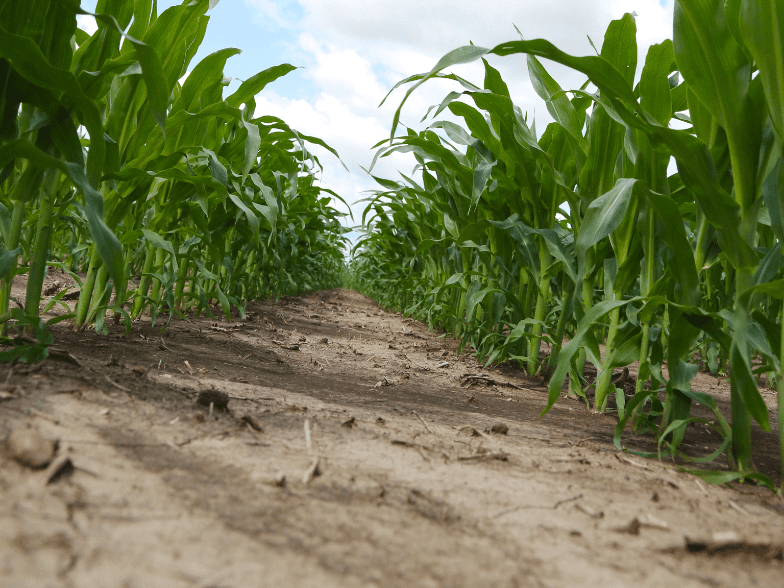
Dry Weather Impact On Crop Development
Corn Stands Thinning
I have noticed where stands have gone down since emergence. There are a number of reasons which contribute to this situation this year. One constant is that we can see it more on the sides of hills where the soil is a little lighter (higher clay content). Higher clay content soils have a lower water holding capacity, and, especially in no-tilled fields, surface residue may have inhibited the further development of seminal and brace roots. The developing root systems have been initiated but are either in dry soil or residue, which slows or stops further growth. The result is that some of the corn has reached the 6-8 leaves stage sustained only by the primary roots and then flopping over from lack of a seminal/brace root system (Rootless Corn Syndrome). Shallow planting depths also encourage this problem.
At the V6-V8 stage of development, the seed is now exhausted as the plant’s primary food source for development. The growing point is now emerged above ground, and tassel initiation has begun. The nodal/seminal root system should be developed – this year, it is in question. Soon ear shoots, and tillers should be visible deep within the whorl of the plant.
| Stage | GDD (Growing Degree Days -base 50) |
|---|---|
| Emergence | 2000 |
| V2 – 2 leaf | 200 |
| V6 – tassel initiation | 475 |
| V20 | 740 |
| V14
|
1000 |
| VT (tassel emergence) | 1150 |
| Silking | 1400 |
| R4 (kernel dough stage) | 1925 |
| R5 (kernel dent stage) | 2450 |
| R6 (physiological maturity—black layer) | 2700 |
*courtesy of Hollinger (University of Nebraska)
Water Use and Crop Development
Corn in Eastern Nebraska, on average, transpires between 25-28” of water through the plants during the growing season. Most corn is currently around the V6-8 leaf stage (8-10 collars). We will soon be trying to transpire between 0.10” and 0.15” of moisture through the plants each day. The current dry soil profile is the main problem in that the seminal root development is less than average for this date. A typical corn plant can root up to 4 feet deep. Forty percent of water absorption occurs within the top 12”, 30% in the second foot, 20% in the third foot, and 10% in the fourth foot of the soil profile. Deep within the whorl of the plant, corn is just completing the time of ear initiation and development of the tassel. In other words, components of yield (kernels per ear, ears per acre) are already determined and are subject to water stress within the plant. The following table demonstrates the amount of water used per day.
Many of the soybeans have completed the unifoliate (V1) stage, with the 1st trifoliate emerging and the 2nd and 3rd trifoliate visible. Soybeans, on average, transpire between 22-25” inches of water through the plants each year. They use 65% of total water use during the reproductive stage (flowering/podding) of development. Soybean root development can reach 5 and 6 foot depths, but like corn, the largest concentration of root development and water uptake occurs within the top 2 feet of the soil profile. The following table demonstrates the amount of water used per day.
| Growth Stage | Inches Water Use/Day |
|---|---|
| Germination/Emergence | .1 – .15 |
| Vegetative Growth | .15 – .20 |
| Flowering | .25 – .30 |
| Pod Development | .20 – .25 |
| Seed Fill | .15 – .20 |
| Maturation | .05 – .10 |
Dr. John McNamara // Wilbur-Ellis Agronomist


